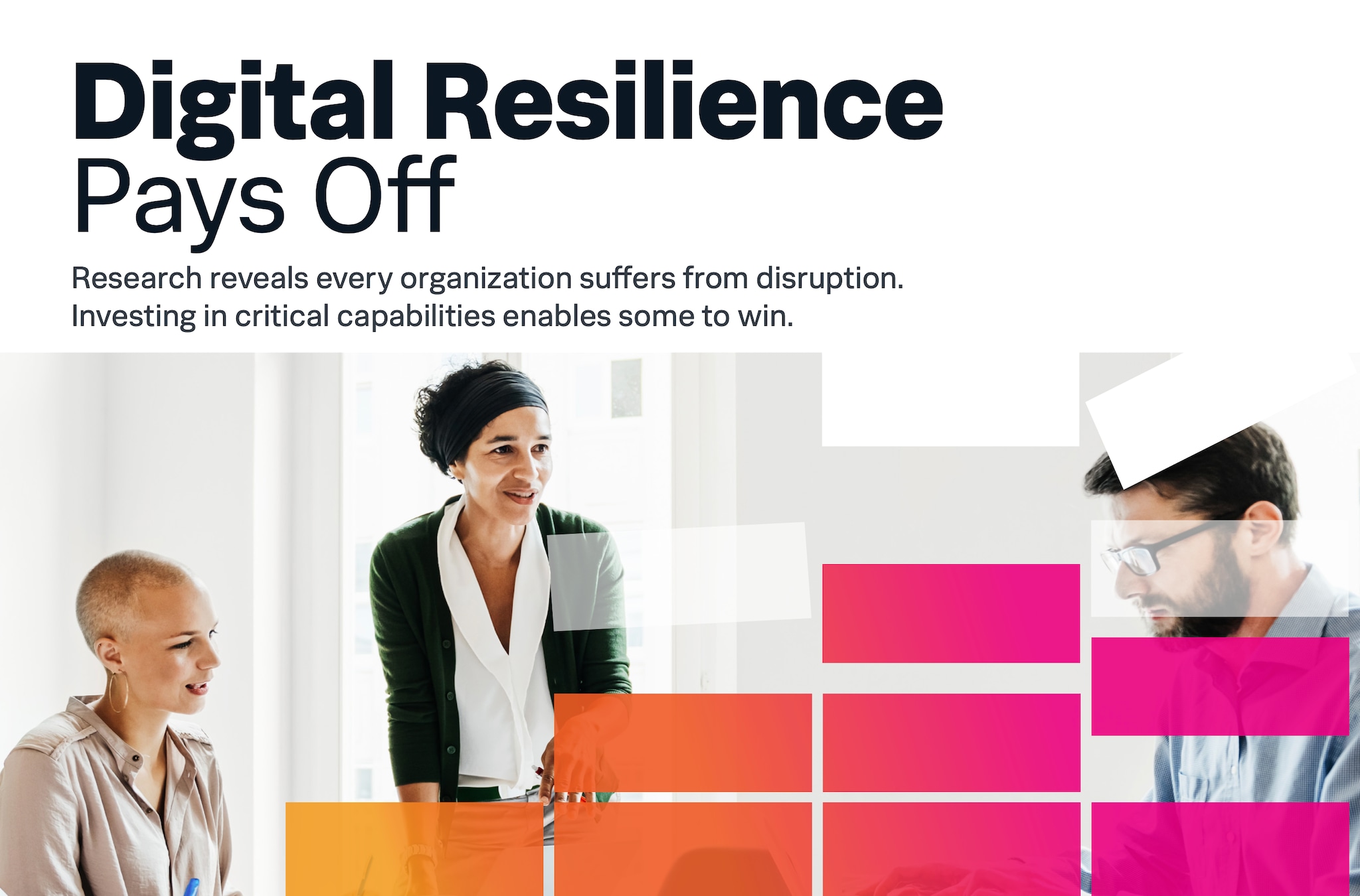Splunk and the Cisco Store demonstrate the power of digital resilience at NRF 2025
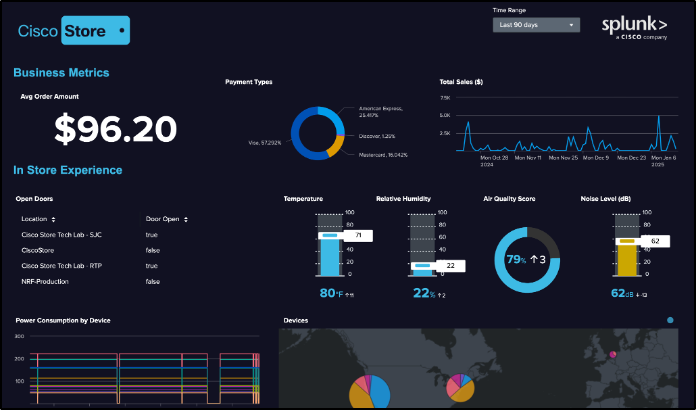
Hyper-personalization. Ambient intelligence. GenAI. These are a few of the buzz words that attendees could hear and see throughout National Retail Federation 2025. A quick look around the show’s technology expo and it became clear that today’s retail landscape is evolving more rapidly than ever. New business models, shifts in customer behaviors and rapid technological advancements are heavily influencing the role of the associate and the customer experiences of tomorrow.
However, for all of this to work seamlessly, reliably and securely, one crucial piece to the retail puzzle must be in place. Since the inception of retail IT, teams have been tasked with balancing innovation and agility with digital resilience. Dynamic customer expectations have more recently brought resilience front and center to a retailer's success. NRF provided us with the opportunity to share how retailers can accomplish resiliency without slowing down innovation and the pace of change.
At NRF 2025, attendees stepped inside the Cisco Store concept to experience digital first, scalable solutions with resilience at the core. The Cisco Store is a cutting-edge retail environment that integrates Cisco, Splunk and partner technologies across two physical store locations, travel stores at conferences and global eCommerce. The stores serve as living laboratories to showcase the latest in networking, security, observability and more.
The interactive booth design started with attendees joining the store wifi through Cisco Spaces captive portal feature as an entry point for users to access the network. Once connected, they proceeded to scan a QR-code to launch an AI chat bot and order a beverage in natural language from Cafe Cisco via their digital messaging applications, powered by Webex Connect. The next stop included an overview of Meraki Video, Cisco’s cloud-managed cameras that provide real-time monitoring, built-in analytics (ie motion detection, heat mapping, people counting) and seamless integrations with Meraki dashboards.
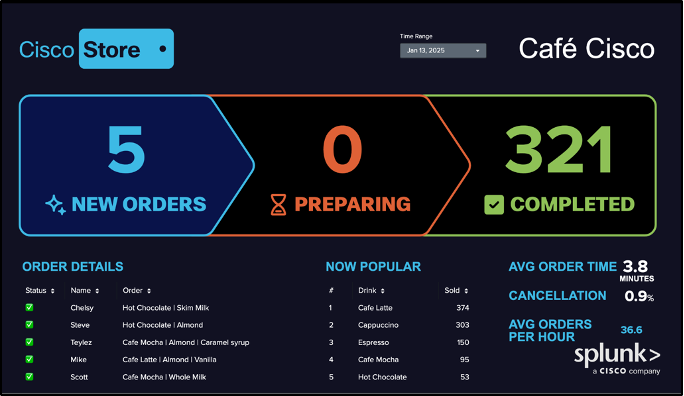
Real-time insights from Webex Connect mobile coffee orders with sales trends and operational metrics
Next up, the Splunk Cloud Platform. With Splunk being a part of the greater Cisco, NRF presented an opportunity to integrate the Cisco Store infrastructure, retail applications and services into the unified platform to power more intelligent operations. This is achieved by Splunk ingesting a number of new data sources for Webex Connect, Meraki infrastructure, ThousandEyes, Shopify point of sale, the Splunk Edge Hub and more. Bringing this data together in a single platform enables the Cisco Store to consolidate companywide real-time business data into customizable dashboards with Splunk Dashboard Studio. These visually rich dashboards bring to light real-time insights and contextual alerts for sales trends, customer behaviors and the overall health of distributed retail IT environments.
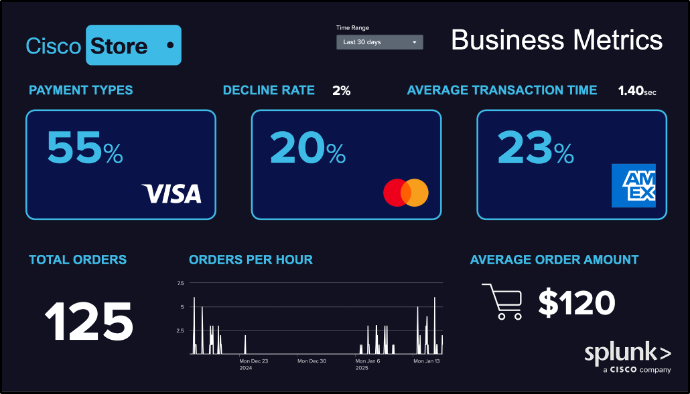
Real-time monitoring of payment processing to ensure that customers can complete transactions quickly, reliably and securely across all channels
With the Cisco Store being an omnichannel retailer, Splunk IT Service Intelligence provides visibility across the physical and online stores with real-time key performance indicators and service-level monitoring. And, to ensure the uptime of the network connected experiences, ThousandEyes data is ingested directly to the platform. Splunk enables the Cisco Store to proactively manage and troubleshoot IT issues across all experiences through AI-driven incident prediction, detection and resolution. With intelligent incident management and predictive analytics via Machine Learning, anomalies can be quickly detected and adaptive thresholding can predict issues before they impact the customer journey. This end-to-end visibility is achieved by combining Cisco’s world-class network and security infrastructure with Splunk’s powerful data analytics capabilities.
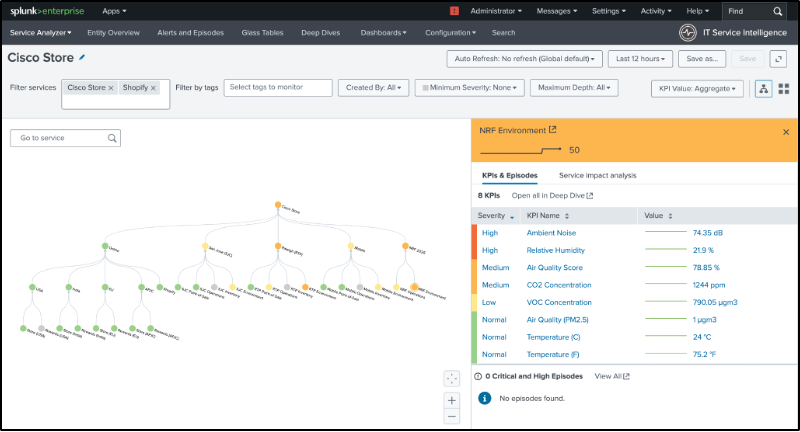
Splunk IT Service Intelligence service map and analyzer of the Cisco Store for online and physical stores
And finally, the Cisco Store tour wraps up with energy consumption monitoring through Meraki sensors combined with edge processing of in-store data with Splunk Edge Hub. Bringing the two together enables retailers to monitor every aspect of physical stores with environmental data (ie temperature, humidity, noise level) while improving visibility to sustainability initiatives. Splunk Edge Hub is a hardware device that processes data at the edge to generate the valuable real-time operation insights that retailers rely on while reducing bandwidth consumption - meaning retailers can process data locally in the store and only send the relevant alerts, events and information across the wide-area-network (WAN).
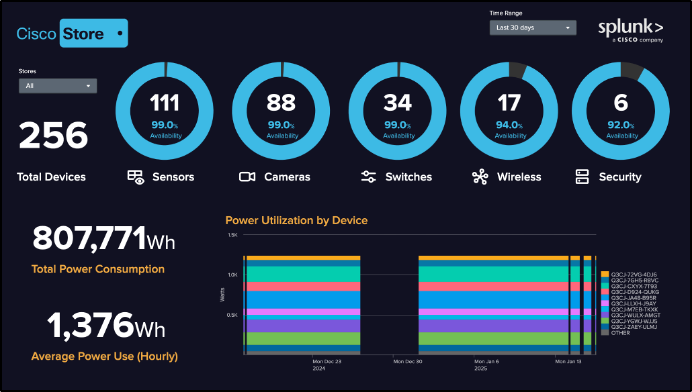
End-to-end visibility for device health, asset management and power consumption for real-time insights across stores
With NRF 2025 behind us, there were many inspiring conversations and innovative themes that deeply resonated with me, but one thing is clear, the retail of tomorrow is full of ‘game changing’ and transformative opportunities. As we envision the next era of seamless, personalized customer experiences, we must not lose sight of digital resilience as the critical foundation to success. Achieving this means ensuring uninterrupted experiences, protecting sensitive data and having the agility to adapt swiftly to evolving business needs. These goals become a reality with the power of a unified security and observability platform, enabling retailers to innovate with confidence and thrive in the new era of retail.
Get more information about our industry offerings at Splunk for Retail and Cisco Digital Retail Solutions.
Related Articles
About Splunk
The world’s leading organizations rely on Splunk, a Cisco company, to continuously strengthen digital resilience with our unified security and observability platform, powered by industry-leading AI.
Our customers trust Splunk’s award-winning security and observability solutions to secure and improve the reliability of their complex digital environments, at any scale.
